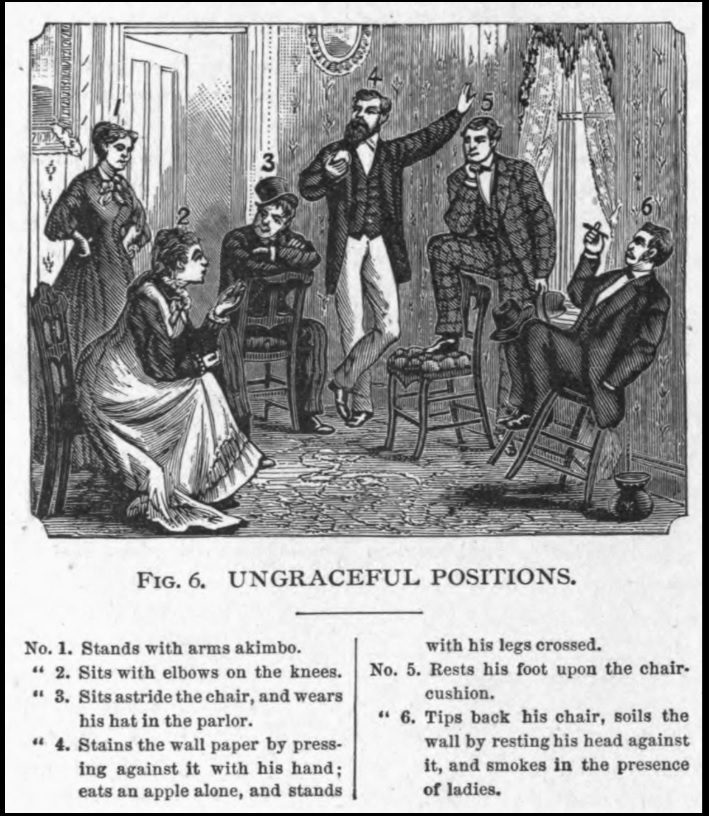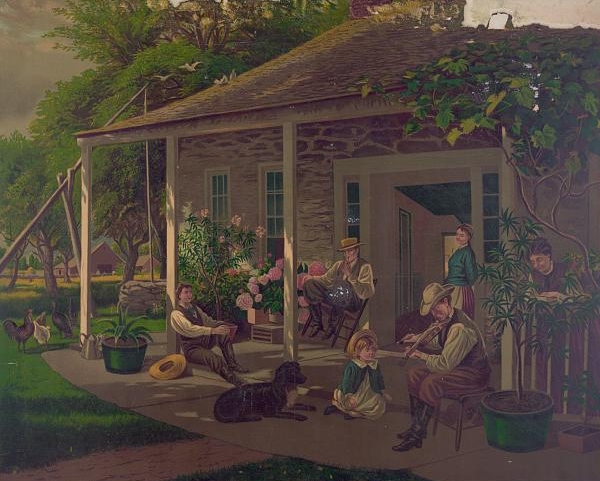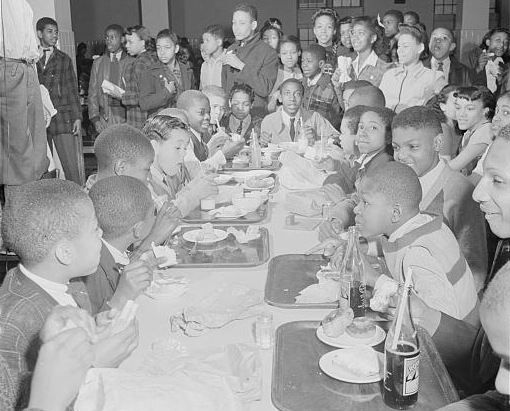Words come and go and meanings change over time. Exploring the story behind a word can illustrate changes daily life, social behavior, and technology over time.
Introduce a word that has fallen out of daily use and ask students to guess the meaning. For example, words related to food and cooking change as technology and tastes change. Saleratus and gill are “dead” words that have fallen out of use; the meaning of pudding has changed over time. Old recipes make excellent primary source texts for this classroom exploration.
19th Century Convenience Cooking: Saleratus

Saleratus was an early form of baking powder first sold in the early 19th century. Pearl ash (introduced in 1790), saleratus (introduced in 1840), or bicarbonate of soda are alkali chemical agents used to make breads, cakes, and biscuits rise so that the final product is light or fluffy. Around 1850, bicarbonate of soda was combined with an acid, usually cream of tartar, to create baking powder, the leavening agent still used today. With these products, home cooks could make baked products much quicker and easier. Baking with yeast, used to leaven breads for thousands of years, took much longer. New convenience products such as saleratus and baking powder changed cooking and the foods eaten at home.
A pint of molasses and a gill of milk
A gill was a unit of measure for liquids equal to a teacup, quarter of a pint, or in modern terms – ½ cup standardized kitchen measure. Before the late 19th and early 20th century, kitchen measures described in recipes were very different than the sets of standardized measuring cups and spoons sold today. References to teacups or spoons in recipes before the 20th century meant that home cooks literally used regular teacups or spoons or handfulls – so the outcome of recipes varied from cook to cook. Cookbook authors assumed their readers were already experienced cooks and knew how to adjust recipes, reflecting the pre-industrial reality that cooking, from scratch, took place in every home, every day. Note in the 1838 recipe for gingerbread below that an oven temperature is not provided – home cooks didn’t have thermometers. Home cooks were expected to just know the correct temperatures for baking in their wood fueled ovens.
Efforts to standardize kitchen measures began in mid-1800s and in 1915, the U.S. Bureau of Standards published an official code stating the exact measure required for kitchen measuring cups and spoons. Manufacturers were eager to supply new standardized measuring spoons and cups to home cooks. Cookbook authors such as Fannie Farmer, author of Boston Cooking School Cook Book (1896), promoted these new kitchen tools for the home kitchen.
Lydia Child’s recipe for gingerbread . . .
A very good way to make molasses gingerbread is to rub four pounds and a half of flour with half a pound of lard and half a pound of butter; a pint of molasses, a gill of milk, teacup of ginger, a teaspoonful of dissolved pearlash stirred together. All mixed, baked in shallow pans twenty or thirty minutes.
Hard gingerbread is good to have in the family, it keeps so well. One pound of flour, half a pound of butter and sugar, rubbed into it; half a pound of sugar; great spoonful of ginger, or more, according to the strength of the ginger ; a spoonful of rose-water, and a handful of caraway seed. Well beat up. Kneaded stiff enough to roll out and bake on flat pans. Bake twenty or thirty minutes.
From The American Frugal Housewife, 1838 (p. 70)
What would a pudding looking like in 1776?
Many words may seem similar, and may even be used interchangeably, but have distinct meanings. For example, ask students to describe pudding. They will refer to a sweet creamy dish, often created from a prepackaged “instant” powder, mixed with milk. Many will refer to a trademarked brand of packaged pudding mixes. But the word pudding meant something very different before the 20th century.
Before wood-fired stoves with ovens for home baking were invented in the first half of the 19th century; cooking was done at a hearth. Only very large homes and professional bakers had ovens for baking. But the home cook, at a hearth, could make puddings, dense breads or mixtures of meat and grains steamed over a pot of boiling-water. Since these pre-industrial puddings were generally high in fat (butter or animal fats), the leftovers would keep for several days, an important quality in an era before refrigeration.
Historical puddings could be savory or sweet. But as British and American English evolved differently after that revolutionary split in the 18th century, the meaning of the word shifted in different directions. In Britain, a pudding may still refer to a savory (not sweet) dish that includes meat such as Yorkshire pudding or haggis.
Catharine Beecher’s thoughts on Pudding . . .
The recipes of our cookery books are most of them of English origin, coming down from the times of our phlegmatic ancestors, when the solid, burly, beefy growth of the foggy island required the heat of fiery condiments, and could digest heavy sweets. Witness the national recipe for plum-pudding: which may be rendered : Take a pound of every indigestible substance you can think of, boil into a cannon-ball, and serve in flaming brandy. So of the Christmas mince-pie, and many other national dishes. But in America, owing to our brighter skies and more fervid climate, we have developed an acute, nervous delicacy of temperament far more akin to that of France than of England.
From The New Housekeeper’s Manual by Catharine Beecher and Harriet Beecher Stowe, 1873 (p. 190)
Etymology in the Social Studies Classroom
Introduce students to etymology, the study of the origins and history of words and how meaning has changed over time. Ask students to consult a historical dictionary such as the Oxford English Dictionary to learn when words words began to be used in the English language and how the meaning of those words changed over time. The Oxford English Dictionary is available through library databases or by direct online subscriptions.
Related Primary Source Classroom Activities
-

Royal Baking Power Advertisement, 1921 For a classroom set of historical food term flash cards and activities – Food through Time: Exploring Social History with Etymology
- Investigating Family, Food, and Housing Themes in Social Studies
- Mincemeat: Teaching History and Geography with a Holiday Food
- Comparing modern nutrition and exercise to the pre-industrial era
References: The Oxford Companion to Food by Alan Davidson 2006





These ideas and resources are perfect for teaching a lesson on the changing meaning of words and allowing students to write a story on their own in my third grade class. For example, I could ask students to work explore the meaning of the word like the example of pudding here. I could also give them an image and have them work to come up with their own story based on what they have found in the image! Can’t wait to use this in my classroom!
Sydney – great idea. More historical foods words and ideas for activities here https://teachingwiththemes.com/index.php/classroom-activities/food-through-time-exploring-social-history-with-etymology/